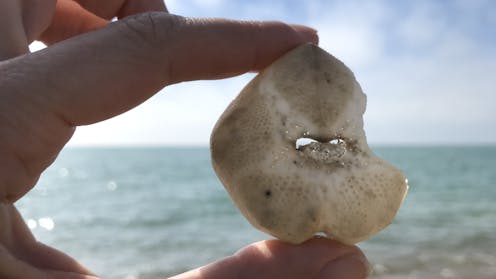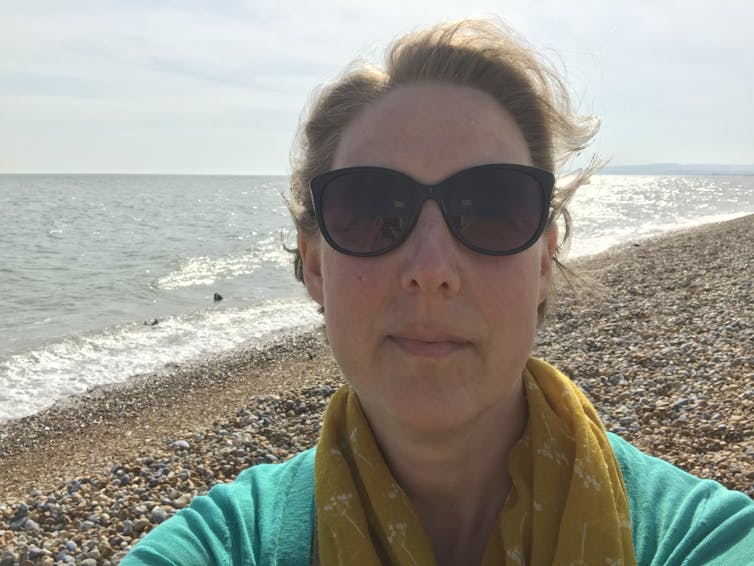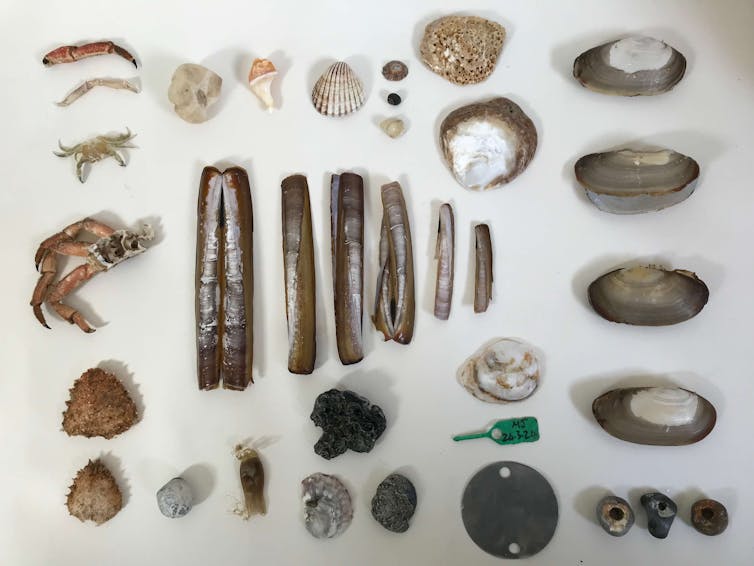
Wild swimming and forest bathing have gained in popularity, all in a bid to improve our health. With “green prescriptions” now being issued by doctors instructing patients to spend time outdoors, ideas of “nature cure” – spending time in the natural world for healing purposes – may seem like a recent development.
But ideas of a change of air and sea cures were popularised in the 19th century. Escalating rates of tuberculosis were exacerbated by poor sanitation and overcrowding. Patients were sent to the coast for convalescence in open-air wards – offering an antidote to these contributory factors, but not a cure for the disease itself.
So, for centuries, the term “nature” has been associated with goodness, health and cure. My research uses creative writing to investigate the natural world through my experience of living with chronic illness, pain and fatigue. While this challenges the notion often found in nature and place writing that the natural world can somehow heal whatever you need it to, it has helped me think differently about the relationship between the outside and our health.
For disabled people, ideas of nature and “natural” are complicated by ideas of eugenics, similarly fostered in the 19th and 20th centuries.
Built on foundations that regarded disability as “unnatural”, eugenics is a proposed form of selective breeding that seeks to control inherited characteristics through forced sterilisation and euthanasia. These are ideas that allow and enable society to regard disabled people as “less than” and continue to bubble beneath the surface with the assisted dying debate.
In medicine, disability is regarded as a medical problem. The social model of disability reframes this as a societal issue of barriers that limit disabled people’s access to society (for example, through travel or education). I live with chronic illness where both the medical and social models are relevant. So, for me, the parallels between nature and health are complex.
Conventional nature writing and “place writing” – a form of creative writing that explores the landscape and our relationship within that environment – typically explore ideas from the biased perspective of physically fit, able-bodied, middle-class, heteronormative, cis white people unaware of their body, moving with ease through the landscape.
My own PhD research into place writing embraces my own bias, seeking specifically to introduce illness and disability into conversations about our relationship with the more-than-human world – that’s everything in the natural world aside from people.
I draw on my own personal experiences, using the creative practice of place writing as a research tool. I’ve spent time on the coast of the Romney Marshes, one of the most climate-threatened shorelines in the south of England. Here, beachcombing has become both research and ritual for me – a way to explore the entanglement of ecological fragility and chronic illness.

On the shoreline, I’ve explored how the vulnerability of place mirrors that of my body. The objects I find on the foreshore prompt my creative writing and evidence what lies beneath the surface, out at sea.
I draw on the work of other researchers who have learned from flotsam and jetsam. Oceanographer Curtis Ebbesmeyer modelled patterns of the ocean currents through beachcombing – plotting the arrival on land of a cargo spill of yellow rubber ducks.
Writer and naturalist, Sally Huband follows the history of objects she finds on the shore of Shetland in her book Sea Bean. Huband uses examples to rewrite narratives of coastal folklore, dismantling misogynistic interpretations of, for example, the witch and the selkie (a mythological creature that transforms from sea creature to human).
Poet, writer and professor of creative writing, Jean Sprackland writes of her time beachcombing in her book Strands. Following a year of walking the beach in the north-west of England, Sprackland highlights the interconnectedness and interdependence of all living things – something I have become acutely aware of in developing chronic illness.
The illusion of independence
The illusion of independence is something you can maintain while healthy. Sickness shows us we are all interdependent and interconnected. And we have long been told that nature is something outside of ourselves, separate to us. This nature-culture divide is something that has been implicitly challenged in my own relationship with nature.
Restoration of my sick body is as impossible as restoration of the land (and sea). I cannot, however hard I try, achieve a cure, through nature or otherwise, of my inherited connective tissue disorder. Indeed, some nature writers have argued that if I were to try, I might erase an important part of myself.
British writer Harriet Martineau (1802-76) was one of the first people to write of her observations as a patient, and to value what is learned from these experiences. Noting the value of a view of green (or blue) spaces from her sick bed, Martineau also appreciated rest and recuperation.
Research has since replicated Martineau’s findings, showing views of green spaces accelerate recovery from surgery and reduce the need for pain medication. But seeing green spaces is not a replacement for effective healthcare, disability access, or medical research – nor for time and space to rest and convalesce.

Swimming, sailing, even just building a sandcastle - the ocean benefits our physical and mental wellbeing. Curious about how a strong coastal connection helps drive marine conservation, scientists are diving in to investigate the power of blue health.
This article is part of a series, Vitamin Sea, exploring how the ocean can be enhanced by our interaction with it.
While a view of trees may soothe, they do not cure. Disability highlights that nature cure is a fallacy. Through my reconnection with nature, I’ve reframed my experience of illness. I live more easily to the changing seasons than with a clock or calendar now. Periods of rest for my body, as for the land, are similarly essential for good health.
While creating the anthology, Moving Mountains: Writing Nature Through Illness and Disability, I learned that a greater regard for disabled people and the natural world are two sides of the same coin. Our sick and disabled bodies are just as worthy of care as our sick planet. The imperfect complicated places we live (and the people who live in them) are of value and worth looking after just the same.
Don’t have time to read about climate change as much as you’d like?
Get a weekly roundup in your inbox instead. Every Wednesday, The Conversation’s environment editor writes Imagine, a short email that goes a little deeper into just one climate issue. Join the 45,000+ readers who’ve subscribed so far.
Louise Kenward received Arts Council England funding to run an arts project titled Moving Mountains including creating an anthology of the same name.
This article was originally published on The Conversation. Read the original article.







